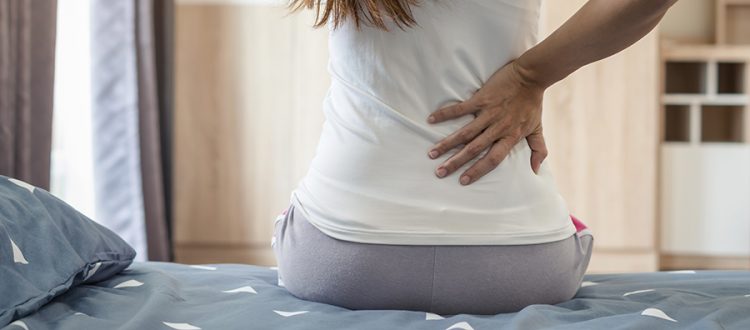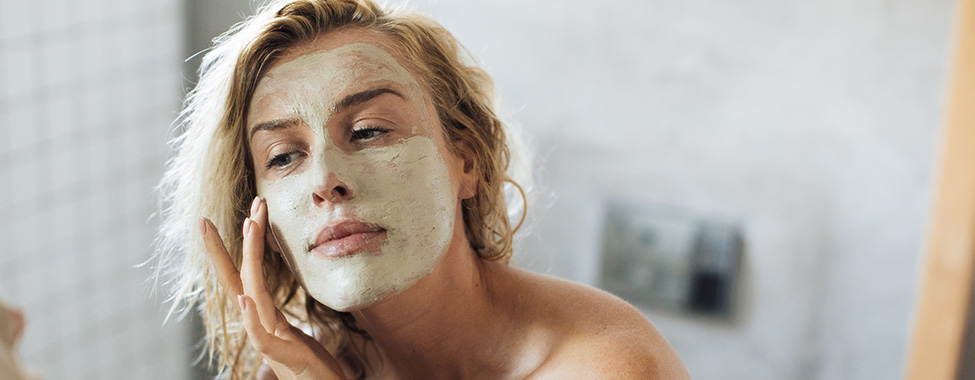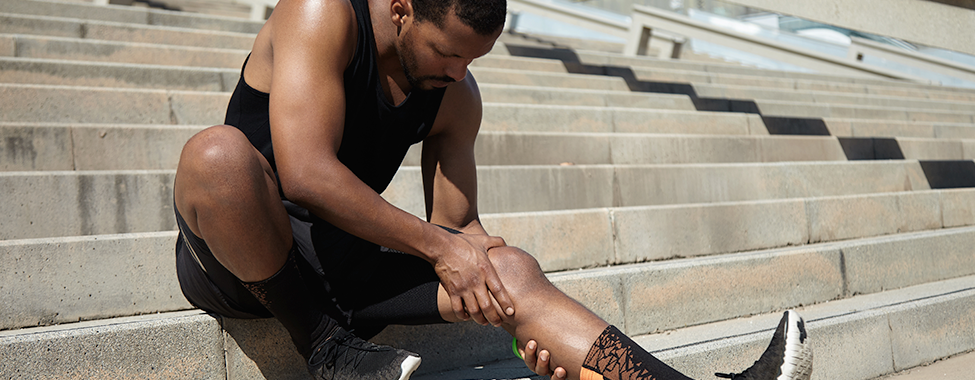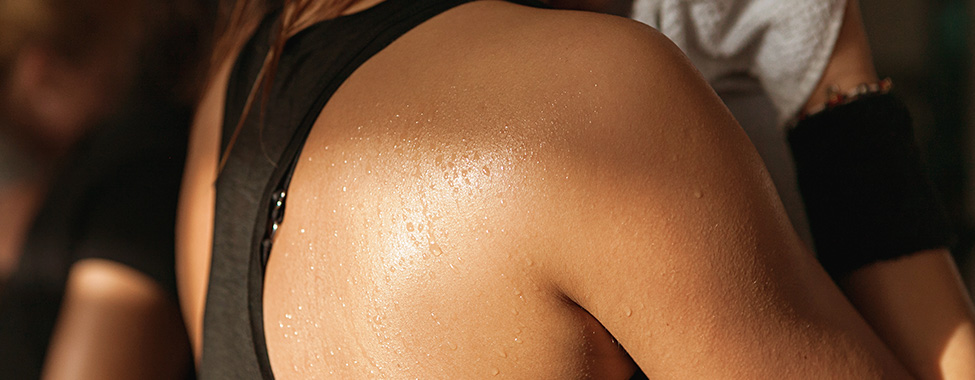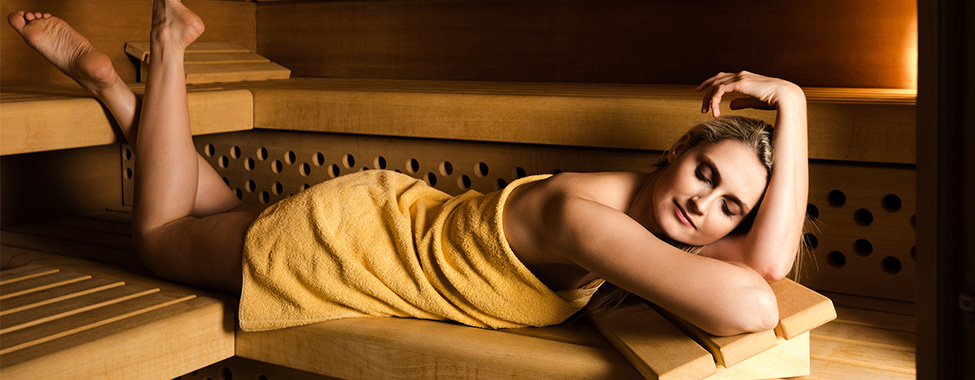Menopause is an experience nearly 50% of the world needs to face. Mood swings, weight gain, hot flashes, and cramps are only a few examples of symptoms. Going through menopause can become more tolerable with the right tools and techniques to help lessen menopause symptoms. Read below to learn how to find natural menopause relief with these tips you can try at home.

What is Menopause?
Menopause is the time that marks the end of your menstrual cycles. It’s diagnosed after you’ve gone 12 months without a menstrual period. Menopause can happen in your 40s or 50s, but the average age is 51 in the United States.
Menopause is a natural biological process. But the physical symptoms, such as hot flashes, and emotional symptoms of menopause may disrupt your sleep, lower your energy or affect emotional health. There are many effective treatments available, from lifestyle adjustments to hormone therapy.
Menopause Symptoms
In the months or years leading up to menopause (perimenopause), you might experience these signs and symptoms:
- Irregular periods
- Vaginal dryness
- Hot flashes
- Chills
- Night sweats
- Sleep problems
- Mood changes
- Weight gain and slowed metabolism
- Thinning hair and dry skin
- Loss of breast fullness
Symptoms, including changes in menstruation, are different for every woman. Most likely, you’ll experience some irregularity in your periods before they end. If you feel you are experiencing the symptoms of menopause, make an appointment with your doctor to discuss any questions or concerns about this next phase in your life.

Natural Remedies for Menopause Symptoms
Infrared Sauna
It may sound counter-intuitive to recommend a sauna for someone who is already too hot, but it’s an amazing tool for women suffering with symptoms of menopause. Regular infrared sauna use provides many health benefits for those seeking natural menopause relief, including symptoms affecting your mood, weight, and immune system.
Sleeping through the night is a struggle many suffer through during menopause, which is difficult as sleep is beneficial for your mental and physical health during this time. Infrared saunas improve sleep before bed by putting the body in a parasympathetic state. Saunas also help decrease stress levels, which in turn decreases the frequency and intensity of hot flashes and night sweats. Additionally, reduced stress helps improve mental clarity and lift your mood throughout the day.
For your physical health, sauna health benefits include weight loss and an improved immune system. Infrared sauna heaters raise your core body temperature, which temporarily induces an artificial fever and helps boost your immune system. This, combined with improved elimination of toxins and wastes via intense sweating, can increase your overall health and resistance to disease. As your body increases sweat production to cool itself, your heart works harder to pump blood at a greater rate to boost circulation. This increase in your metabolism will burn calories and lose weight.
Vitamins
Hormonal changes during menopause can cause bones to weaken, increasing the risk of osteoporosis. Calcium and vitamin D are linked to good bone health, so it’s important to get enough of these nutrients in your diet. A diet rich in calcium and vitamin D is important to prevent the bone loss that can occur during menopause.
Adequate vitamin D intake in postmenopausal women is also associated with a lower risk of hip fractures due to weak bones. Many foods are calcium-rich, including dairy products like yogurt, milk and cheese. Green, leafy vegetables such as kale, collard greens and spinach have lots of calcium too. It’s also plentiful in tofu, beans, sardines and other foods. Additionally, calcium-fortified foods are also good sources, including certain cereals, fruit juice or milk alternatives.
Sunlight is your main source of vitamin D, since your skin produces it when exposed to the sun. However, as you get older, your skin becomes less efficient at making it. Taking a supplement or increasing food sources of vitamin D may be important to help reach adequate vitamin levels. Rich dietary sources include oily fish, eggs, cod liver oil, and foods fortified with vitamin D.

Healthy Weight
Achieving and maintaining a healthy weight may help alleviate menopause symptoms and help prevent disease. It’s common to gain weight during menopause, which can be due to a combination of changing hormones, aging, lifestyle and genetics.
Gaining excess body fat, especially around the waist, increases your risk of developing diseases such as heart disease and diabetes. In addition, your body weight may affect your menopause symptoms. One study of 17,473 postmenopausal women found that those who lost at least 10 lbs (4.5 kg) of weight or 10% of their body weight over a year were more likely to eliminate hot flashes and night sweats.
Exercise
Regular exercise can help alleviate menopause symptoms such as poor sleep, anxiety, mood, and fatigue. It can also protect against weight gain and various health conditions. While there is currently not enough evidence to confirm whether exercise is effective for hot flashes and night sweats, there is evidence to support other benefits of regular exercise. These include improved energy and metabolism, healthier joints and bones, decreased stress and better sleep.
For example, one study found that exercising three hours per week for one year improved physical and mental health and overall quality of life in a group of menopausal women. Regular exercise is also associated with better health and protection against diseases and conditions including cancer, heart disease, stroke, high blood pressure, type 2 diabetes, obesity and osteoporosis.
Phytoestrogens
Phytoestrogens are naturally occurring plant compounds that can mimic the effects of estrogen in the body. Therefore, they may help balance hormones. Foods rich in phytoestrogens include soybeans and soy products, tofu, tempeh, flaxseeds, linseeds, sesame seeds and beans. However, the phytoestrogen content in foods varies depending on processing methods.
One study found that diets high in soy were associated with reduced cholesterol levels, blood pressure and reduced severity of hot flashes and night sweats among women who were starting to enter menopause. However, the debate continues over whether soy products are good or bad for you. Evidence suggests that real food sources of phytoestrogens are better than supplements or processed foods with added soy protein.

Water
During menopause, women often experience dryness. This is likely caused by the decrease in estrogen levels. Drinking 8–12 glasses of water a day can help with these symptoms. Drinking water can also reduce bloating that occurs with hormonal changes. In addition, water can help prevent weight gain and aid in weight loss by helping you feel full and increasing metabolism.
Diet
A diet rich in fruit and vegetables may help keep bones healthy, and can help prevent weight gain and certain diseases, and can help prevent a number of menopause symptoms.
Fruits and veggies are low in calories and can help you feel full, so they’re great for weight loss and weight maintenance. They may also help prevent a number of diseases, including heart disease. This is important, as heart disease risk tends to increase after menopause. This could be due to factors such as age, weight gain or possibly reduced estrogen levels. Finally, fruits and vegetables may also help prevent bone loss. One observational study of 3,236 women aged 50–59 found that diets high in fruit and vegetables may lead to less bone breakdown.
On the other hand, avoid trigger food. Certain foods may trigger hot flashes, night sweats and mood swings. They may be even more likely to trigger you when you eat them at night. Common triggers include caffeine, alcohol and foods that are sugary or spicy. Keep a symptom diary. If you feel that particular foods trigger your menopause symptoms, try to reduce your consumption or avoid them completely.
A diet high in refined carbs and sugar can cause sharp rises and dips in blood sugar, making you feel tired and irritable. In fact, one study found that diets high in refined carbs may increase the risk of depression in postmenopausal women. Additionally, a large observational study found that among women aged 50–59 years, diets high in processed and snack foods were associated with poor bone quality.
Going through menopause can be quite the experience for anyone who goes through it, but the side effects of menopause can be lessened when using the right tools and techniques. Use these natural menopause relief tips to make this chapter in your life a little more enjoyable!
 Canada
Canada Australia
Australia New Zealand
New Zealand Malaysia
Malaysia China
China










